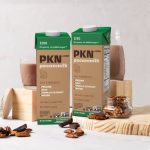There are a few brands out there that seem to have completely dominated the market with a specific kitchen product. When you dream of a Dutch oven, it’s Le Creuset. When people talk cast iron skillets, Lodge inevitably comes up. In the world of zesters, that brand is Microplane. The Microplane Classic Zester is so well-known that many people may not even realize that the word ‘Microplane’ is a trademarked brand name. It’s like how people ask for a Kleenex when they want a tissue — people ask for a Microplane when they really want what’s called a zester or rasp-style grater. I’ll be honest; I was one of the ones who figured that out a bit late.
When my husband and I moved in together and were outfitting our kitchen back in 2019, we needed something specifically to zest citrus, and my brain went “Microplane.” Somehow, over years of consuming food media, the brand had cemented its place in my mind as the actual name of the tool. Hardly any other zester comes close to the tens of thousands of positive reviews for the Microplane Premium Classic Zester, and it’s recommended by professional chefs as well as avid home cooks all across the internet. I wanted to see for myself whether the hype was worth it, and spoiler: After years of using mine, I can answer with a resounding yes.
How I Use the Microplane Classic Zester
I’ve owned my Microplane Premium Classic Zester since 2019, and it performs just as well as the day I bought it. It still looks good too — minus a few little scratches here and there on the handle. I use my zester most often when I need citrus zest for a recipe (most times lemon but also lime or orange). Normally, I’ll just grate a pile of zest onto my cutting board or into a bowl to measure it out, but sometimes I’ll zest right over a dish to finish it off. After citrus, my Microplane sees a lot of Parmesan wedges when I top bowls of pasta with finely grated cheese, and garlic cloves when recipes call for grated garlic.
During the colder months, my husband and I like to grate ginger root to make curries or homemade ginger tea with lemon juice and honey. We’ve also used the Microplane zester with whole nutmeg since we don’t own a designated nutmeg grater, and it’s more comfortable to use than the small blade sheet that once came with a jar of nutmeg. I’m more of a savory cook than a sweet one, but my Microplane also comes in handy on the occasions when I need a dusting of chocolate to garnish certain desserts too.
What I Love About the Microplane Classic Zester
In my humble opinion, the two most important qualities of a good zester are that it has sharp blades and is comfortable to use. Those are two big checks for the Microplane Premium Classic Zester. The tool is marketed as having “surgical grade” blades, and while I can’t attest to that exactly, I can say that the stainless steel blades are extra sharp and have continued to perform well over several years. No matter what ingredient I’m working with, I don’t have to apply a ton of pressure just to get a result — the whole grating experience feels exceptionally smooth.
In terms of comfort, I really love the Microplane’s ergonomic handle, which is rounded and has a soft touch. The handle width and slight curvature where the thumb rests help it comfortably nestle in the palm of my hand so I can have a firm but easy grip while grating. Additionally, the blade portion is about 8 inches long, offering plenty of space to make a long grating motion for more results with less effort. I find the blade length well-balanced with the handle weight too.
The Caveats
I’m not a fan of products with prominent branding splashed all over them, so I don’t love that this zester has “Microplane” written in big, bold letters across the front and back of the handle. Then again, the company’s efforts to advertise its brand are probably why it has become such a household name — interchangeable with the type of product itself — and you can’t fault them for that. One other caveat, that’s equally as minor, is that you may have to use a brush to scrape out any extra bits left in the narrow channel back of the Microplane blade.
Tips and Tricks
- Depending on the retailer, you can find the Microplane Premium Classic Zester in over 30 different color options, including eggplant, mustard, and sage green.
- Think outside the box about how to use the zester: It’s helpful for shaving burnt pieces off of toast and muffins too!
- You can either hold the Microplane in the air while you grate, or there are two rubber points at the end of the grating blade so you can easily rest it on a surface and grate at an angle.
- It is conveniently dishwasher-safe.
- This zester comes with a plastic protective cover for storage, so you don’t have to worry about hurting yourself on the sharp blades when reaching for it in your drawer.
- If you don’t have any space left in your kitchen drawers to store your Microplane, you can always hang it on a hook from the hole in the handle.
How It Compares
Many rasp graters may look similar to the Microplane Classic Zester, but you’ll see the differences in things like the handle design, blade hole size and angle, and blade length or width. While the Microplane has about a 1-inch width, the OXO Good Grips Etched Zester and Grater has a 2.25-inch width. Personally, I think the Microplane’s width is ideal, given the kinds of small ingredients I typically use it for, and I appreciate how narrow it is for storage.
Another top competitor is the Deiss Pro Citrus Zester and Cheese Grater, which has a flat blade design and line teeth — in contrast to the Microplane’s blade, which curves inward on the edges and has curved arc teeth. Some may find the flat style easier to keep clean, but I still think the Microplane’s sharpness outweighs any extra second or two I need for rinsing. After all, the Microplane can still be thrown in the dishwasher. Plus, the curved portions of the Microplane’s blade have teeth too, offering more contact when working with rounded items like citrus.
Microplane also sells a zester tool that’s just the blade portion — but knowing how I work in the kitchen, that’s just an injury waiting to happen. Some people prefer this streamlined, handle-free design because they like that extra surface area, or they want to rest the blade evenly across a bowl. Plus, it takes up even less storage space. There are plenty of Microplane fanatics out there who say that they have better control without the handle or that the blades are so sharp it’s not like you need to have a super tight grip on the tool to work anyway. To each their own!
Food & Wine
The Verdict
I know it’s tempting to want to dismiss a product just because there’s so much hype around it, but in this case, the Microplane Premium Classic Zester doesn’t disappoint. I’ve used it for years, and I’d enthusiastically recommend it to anyone who still needs a tool for fine-grating ingredients. And because it’s so easy to use, I’d even recommend it if you already own a box grater with a fine grating side. I myself have the Cuisipro 4-Sided Box Grater, but I still prefer using my Microplane for small and quick zesting jobs.







